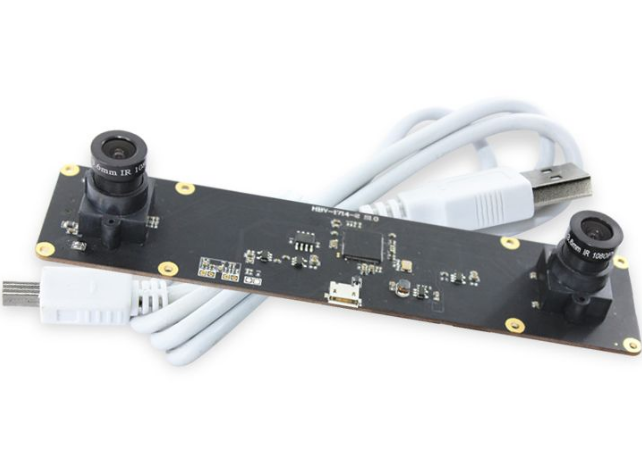What are the uses of an endoscope camera module?
Endoscope camera modules are compact, high-tech optical devices primarily used in the medical field to visualize and diagnose internal body structures. These sophisticated modules have evolved significantly, finding application not only in medicine but also in various industries due to their versatility, precision, and imaging capabilities. Their miniature size and advanced imaging technology make them invaluable tools for a wide range of applications beyond medical diagnostics.
Medical Applications
1. Gastrointestinal Endoscopy:
- Upper Gastrointestinal (GI) Tract: Endoscope camera modules assist in examining the esophagus, stomach, and upper small intestine, detecting issues like ulcers, inflammation, or tumors.
- Colonoscopy: These modules aid in exploring the colon and rectum, allowing for the detection of polyps, colorectal cancer, and other abnormalities.
2. Laparoscopy and Minimally Invasive Surgery:
- Endoscopic camera modules enable surgeons to perform minimally invasive procedures by inserting the module through small incisions. This technology allows visualization inside the body without the need for extensive open surgery, reducing patient recovery time and minimizing complications.
3. Urology and Gynecology:
- In urology, endoscope camera modules help in examining the urinary tract, kidneys, bladder, and prostate, assisting in diagnosing conditions like kidney stones, tumors, or infections.
- In gynecology, these modules aid in visualizing the reproductive system, assisting in procedures such as hysteroscopy and diagnosing conditions like fibroids, polyps, or infertility-related issues.
4. ENT (Ear, Nose, and Throat) Examination:
- Endoscopic camera modules are used to inspect the nasal passages, sinuses, throat, and ears for issues like infections, blockages, or tumors.
5. Orthopedics:
- These modules assist orthopedic surgeons in performing arthroscopic procedures, allowing them to visualize and treat joint-related conditions such as torn ligaments, cartilage damage, or joint infections.
High Resolution Usb Endoscope Camera
Industrial and Non-Medical Applications
1. Automotive Industry:
- Endoscope camera modules are utilized for inspecting and diagnosing engine parts, pipelines, and other hard-to-reach areas in vehicles, helping identify defects, leaks, or blockages.
2. Aviation and Aerospace:
- In aircraft maintenance, endoscopic camera modules aid in examining intricate components within engines, turbines, or tight spaces, facilitating inspections and repairs.
3. Plumbing and Construction:
- Plumbers and construction workers use endoscope camera modules to inspect pipes, ducts, and structures for clogs, leaks, or structural issues, without the need for extensive demolition.
4. Archaeology and Art Restoration:
- These modules assist archaeologists and art restorers in examining delicate artifacts, exploring hidden cavities, or inspecting artworks for damage or restoration needs.
5. Veterinary Medicine:
- Veterinarians utilize endoscope camera modules to examine animals internally, aiding in diagnosing issues within the digestive system, respiratory tract, or reproductive system.
Features and Benefits
1. High-Quality Imaging:
- Endoscope camera modules offer high-resolution imaging capabilities, providing clear and detailed visuals of internal structures, enabling accurate diagnosis or inspection.
2. Flexibility and Maneuverability:
- The small size and flexibility of these modules allow them to navigate through narrow or curved spaces, reaching areas that are otherwise difficult to access, providing comprehensive inspection or examination.
3. Illumination and Visibility:
- Equipped with powerful LED lights or fiber-optic illumination, these modules ensure adequate visibility within the examined area, even in poorly lit environments.
4. Portability and Versatility:
- The compact size and adaptability of endoscope camera modules make them portable and suitable for diverse applications across multiple industries.
5. Real-time Imaging and Documentation:
- Endoscope camera modules offer real-time imaging, enabling immediate visualization and on-the-spot decision-making. Some models also facilitate image and video capture for documentation and analysis.
Challenges and Considerations
1. Cost and Maintenance:
- High-quality endoscope camera modules can be expensive to acquire and maintain due to their intricate design, advanced technology, and specialized components.
2. Sterilization and Hygiene:
- In medical settings, ensuring proper sterilization of these modules between uses is crucial to prevent infections and maintain patient safety.
3. Training and Expertise:
- Proper training and expertise are essential for operators, especially in medical applications, to ensure accurate and safe use of the endoscope camera modules.
4. Durability and Lifespan:
- These modules undergo rigorous usage, which can affect their durability. Regular maintenance and careful handling are necessary to prolong their lifespan and ensure consistent performance.
Future Trends and Advancements
Endoscope camera modules continue to advance with ongoing technological innovations. Some emerging trends include:
- Enhanced Imaging Technology: Advancements in sensor technology, optics, and image processing algorithms aim to improve image quality and diagnostic accuracy.
- Miniaturization and Portability: Efforts are underway to further reduce the size of these modules while maintaining or enhancing their functionality for increased portability and versatility.
- Integration of AI and Robotics: Incorporating artificial intelligence (AI) and robotics can enhance the capabilities of endoscope camera modules, enabling automated diagnosis, navigation, and precision in various applications.
Conclusion
Endoscope camera modules have revolutionized not only medical diagnostics but also various industries by offering a non-invasive, precise, and versatile means of visual inspection. Their ability to provide clear, detailed imaging of internal structures in real-time has significantly improved diagnostic accuracy and efficiency. As technology continues to advance, these modules are expected to evolve further, becoming more compact, sophisticated, and integrated with innovative features, extending their applications across diverse fields beyond the realms of medicine.


评论
发表评论